
人机交互技术 山东大学计算机科学与技术学院
山东大学计算机科学与技术学院
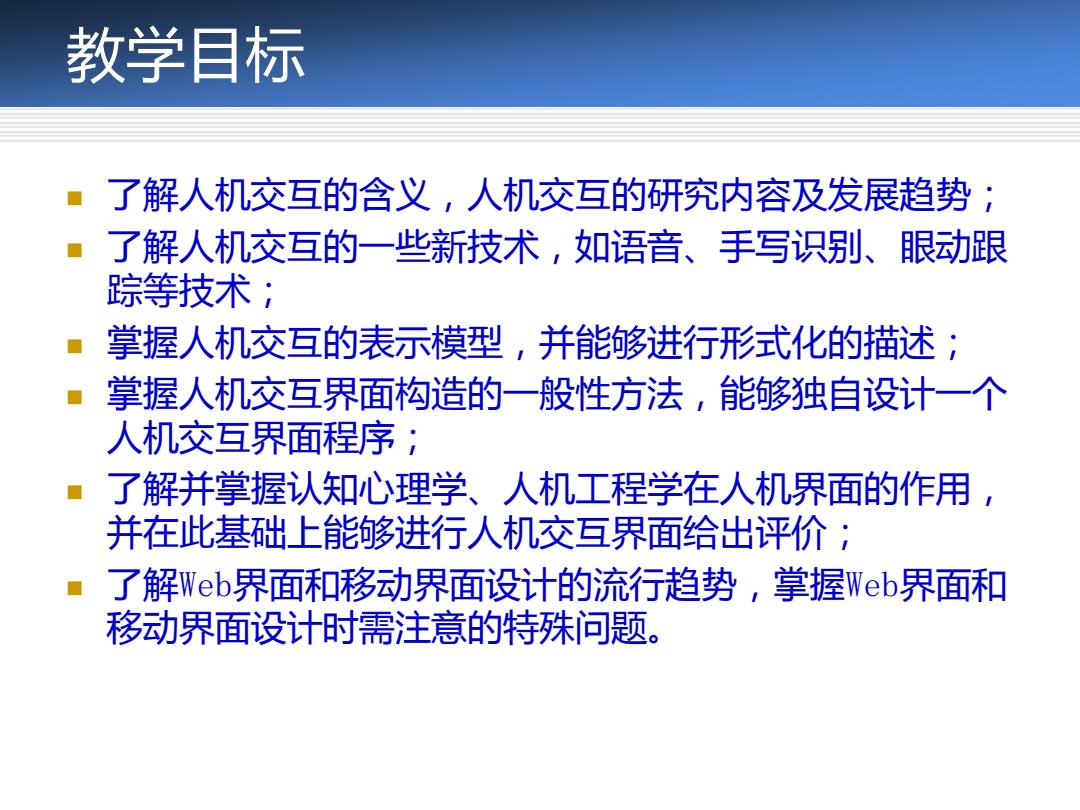
教学目标 了解人机交互的含义,人机交互的研究内容及发展趋势 了解人机交互的一些新技术,如语音、手写识别、眼动跟 踪等技术; 掌握人机交互的表示模型,并能够进行形式化的描述 掌握人机交互界面构造的一般性方法,能够独自设计一个 人机交互界面程序 了解并掌握认知心理学、人机工程学在人机界面的作用, 并在此基础上能够进行人机交互界面给出评价; 了解Web界面和移动界面设计的流行趋势,掌握Web界面和 移动界面设计时需注意的特殊问题
教学目标 ◼ 了解人机交互的含义,人机交互的研究内容及发展趋势; ◼ 了解人机交互的一些新技术,如语音、手写识别、眼动跟 踪等技术; ◼ 掌握人机交互的表示模型,并能够进行形式化的描述; ◼ 掌握人机交互界面构造的一般性方法,能够独自设计一个 人机交互界面程序; ◼ 了解并掌握认知心理学、人机工程学在人机界面的作用, 并在此基础上能够进行人机交互界面给出评价; ◼ 了解Web界面和移动界面设计的流行趋势,掌握Web界面和 移动界面设计时需注意的特殊问题
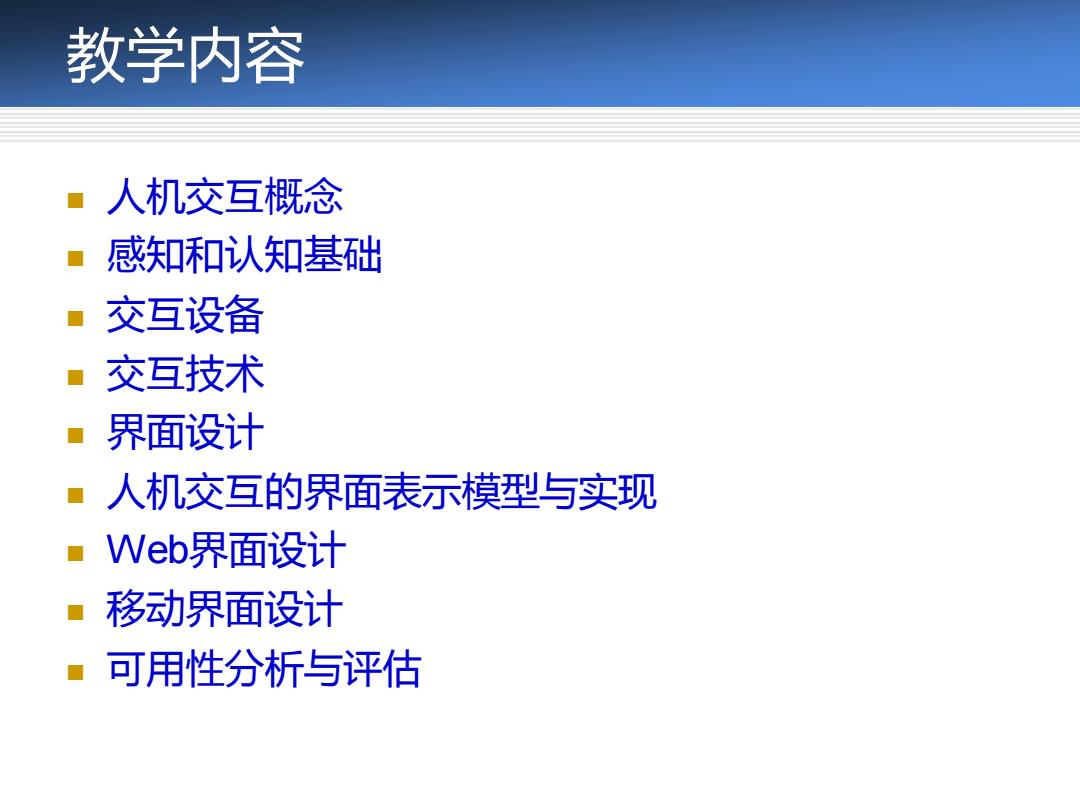
教学内容 “人机交互概念 感知和认知基础 交互设备 ■交互技术 界面设计 ·人机交互的界面表示模型与实现 ·Web界面设计 ·移动界面设计 可用性分析与评估
教学内容 ◼ 人机交互概念 ◼ 感知和认知基础 ◼ 交互设备 ◼ 交互技术 ◼ 界面设计 ◼ 人机交互的界面表示模型与实现 ◼ Web界面设计 ◼ 移动界面设计 ◼ 可用性分析与评估
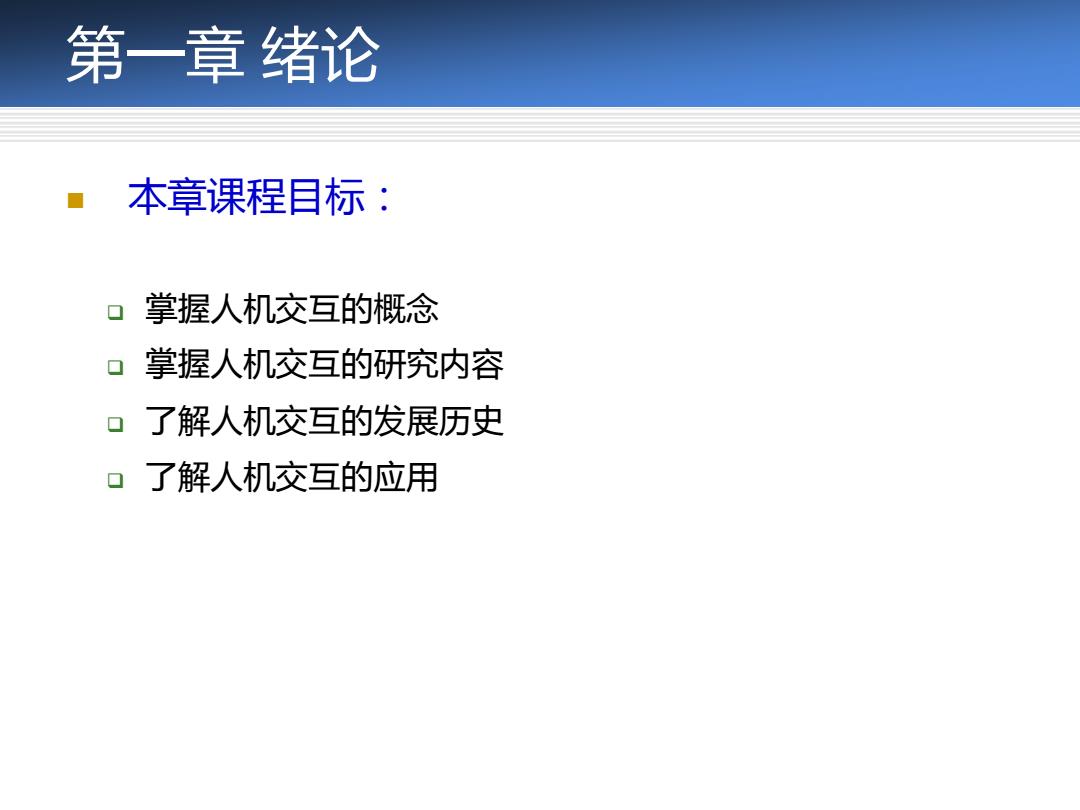
第一章绪论 本章课程目标: 口掌握人机交互的概念 口掌握人机交互的研究内容 口了解人机交互的发展历史 口了解人机交互的应用
第一章 绪论 ◼ 本章课程目标: ❑ 掌握人机交互的概念 ❑ 掌握人机交互的研究内容 ❑ 了解人机交互的发展历史 ❑ 了解人机交互的应用
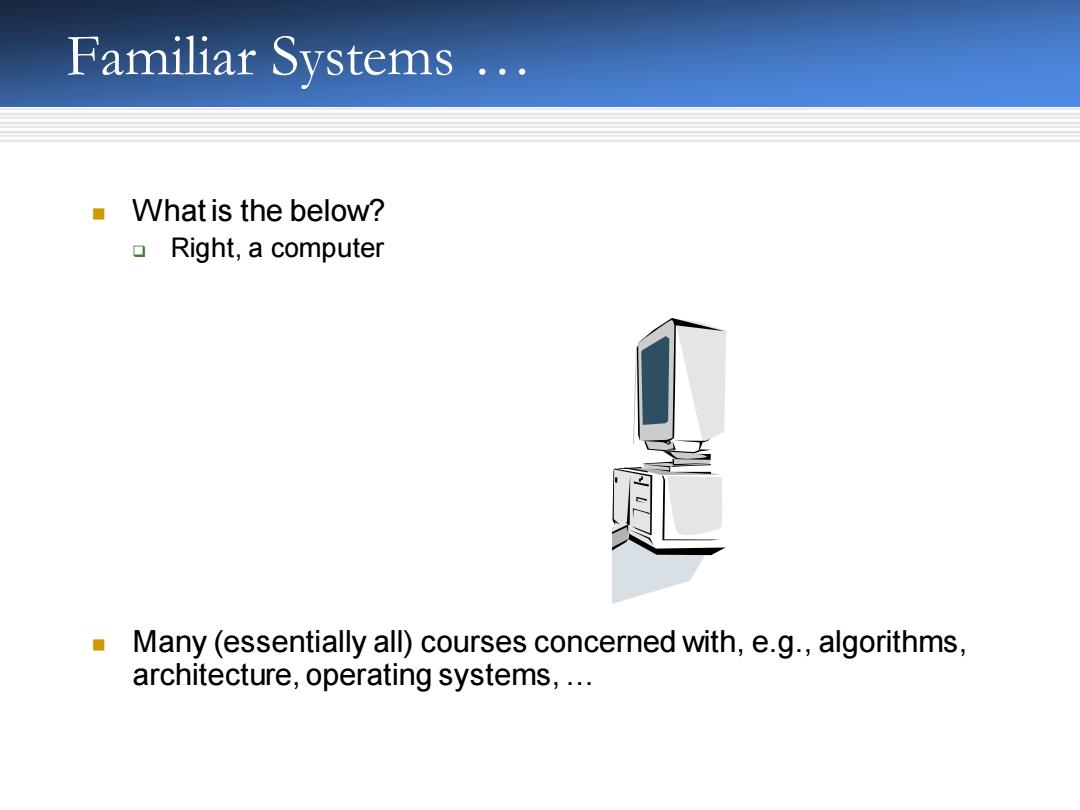
Familiar Systems What is the below? Right,a computer Many (essentially all)courses concerned with,e.g.,algorithms, architecture,operating systems
Familiar Systems … ◼ What is the below? ❑ Right, a computer ◼ Many (essentially all) courses concerned with, e.g., algorithms, architecture, operating systems, …
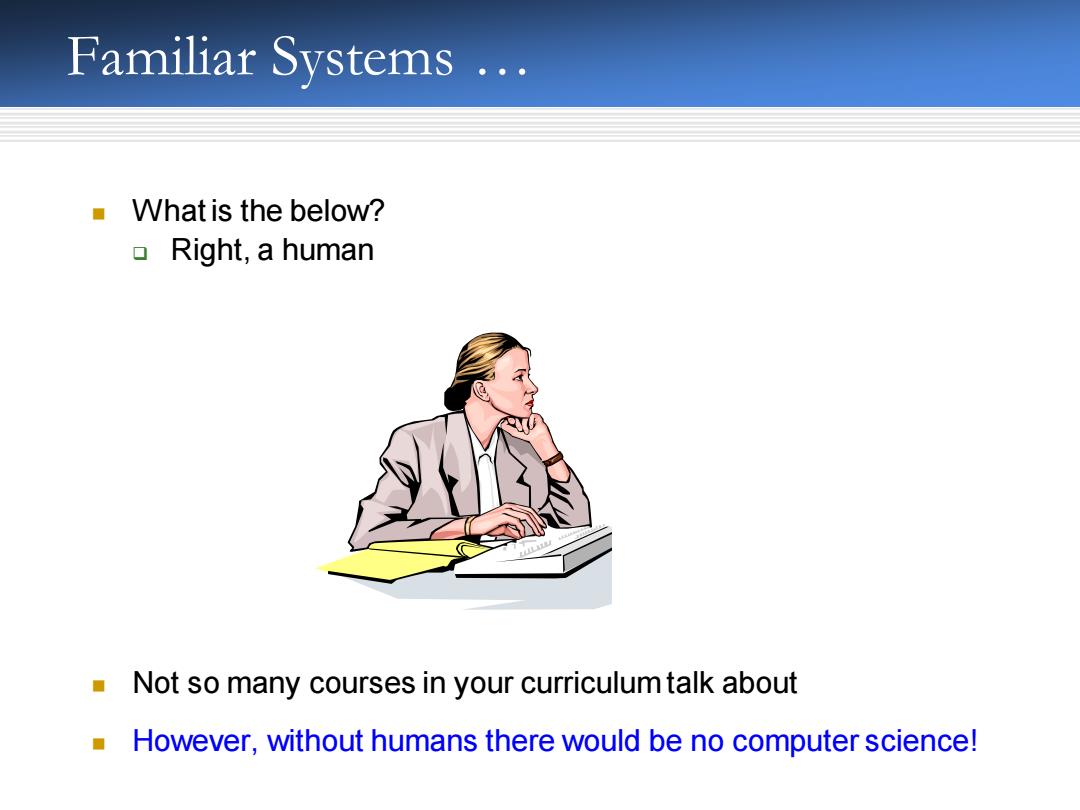
Familiar Systems What is the below? Right,a human Not so many courses in your curriculum talk about However,without humans there would be no computer science!
Familiar Systems … ◼ What is the below? ❑ Right, a human ◼ Not so many courses in your curriculum talk about ◼ However, without humans there would be no computer science!
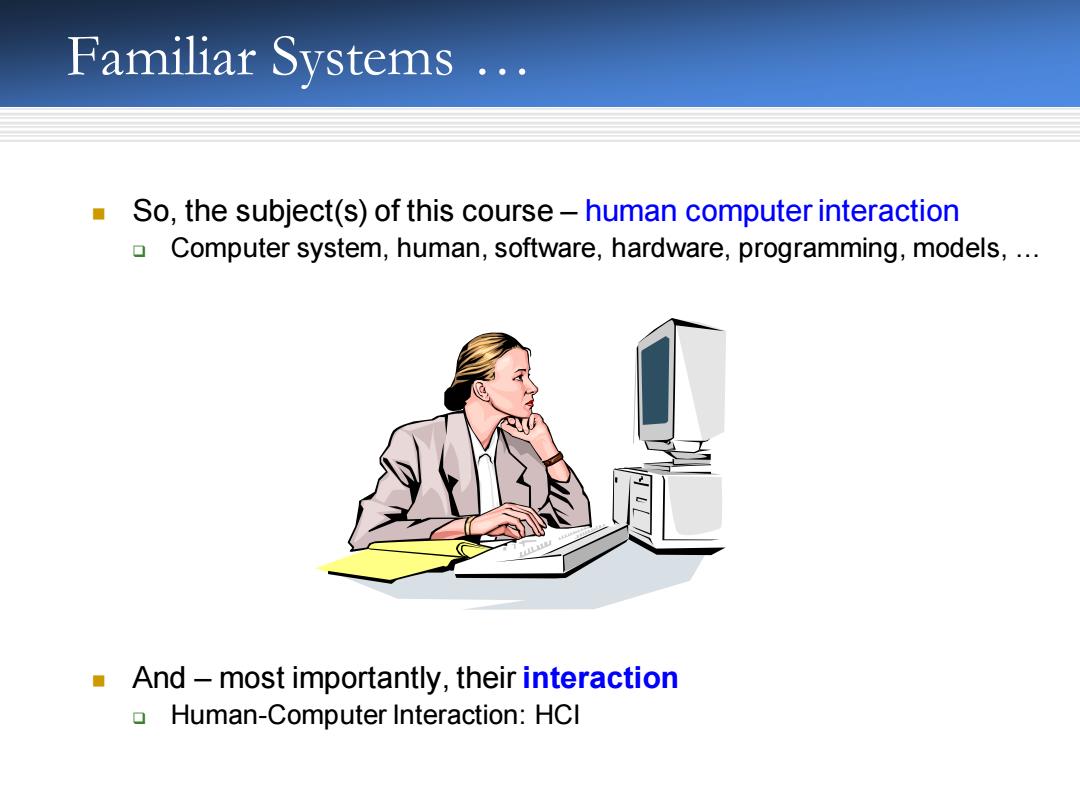
Familiar Systems So,the subject(s)of this course-human computer interaction Computer system,human,software,hardware,programming,models,.. And-most importantly,their interaction Human-Computer Interaction:HCI
Familiar Systems … ◼ So, the subject(s) of this course – human computer interaction ❑ Computer system, human, software, hardware, programming, models, … ◼ And – most importantly, their interaction ❑ Human-Computer Interaction: HCI
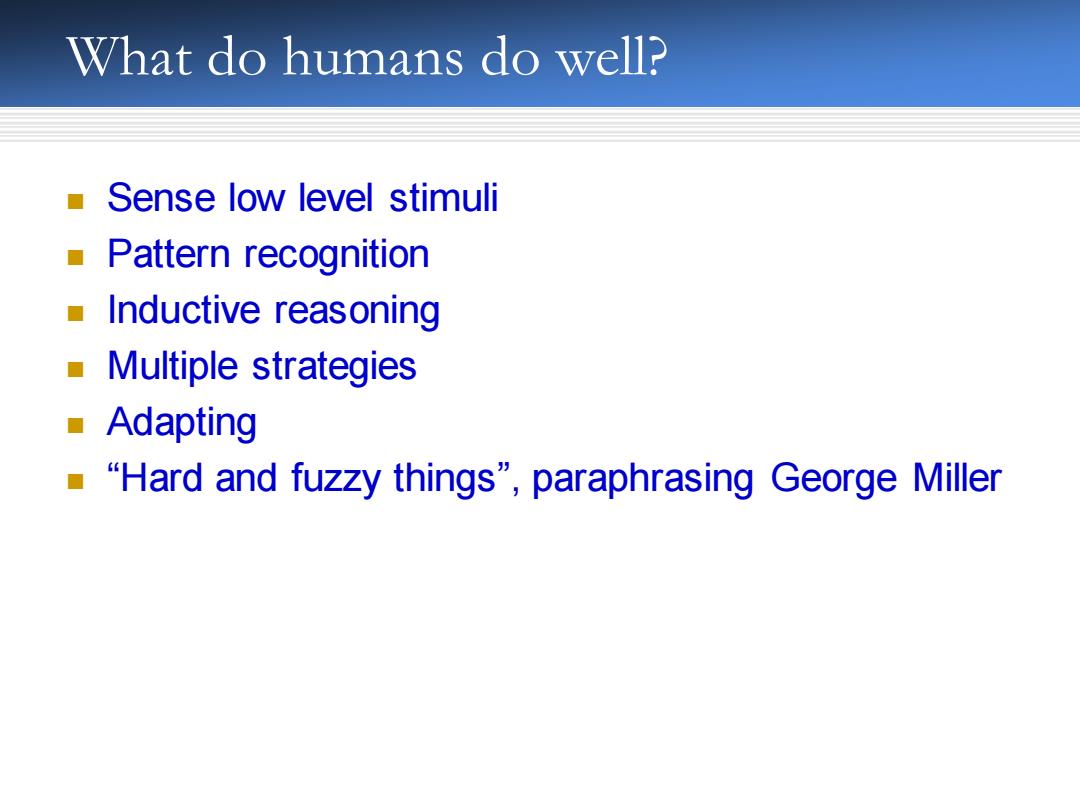
What do humans do well? -Sense low level stimuli Pattern recognition Inductive reasoning ■Multiple strategies Adapting "Hard and fuzzy things",paraphrasing George Miller
What do humans do well? ◼ Sense low level stimuli ◼ Pattern recognition ◼ Inductive reasoning ◼ Multiple strategies ◼ Adapting ◼ “Hard and fuzzy things”, paraphrasing George Miller
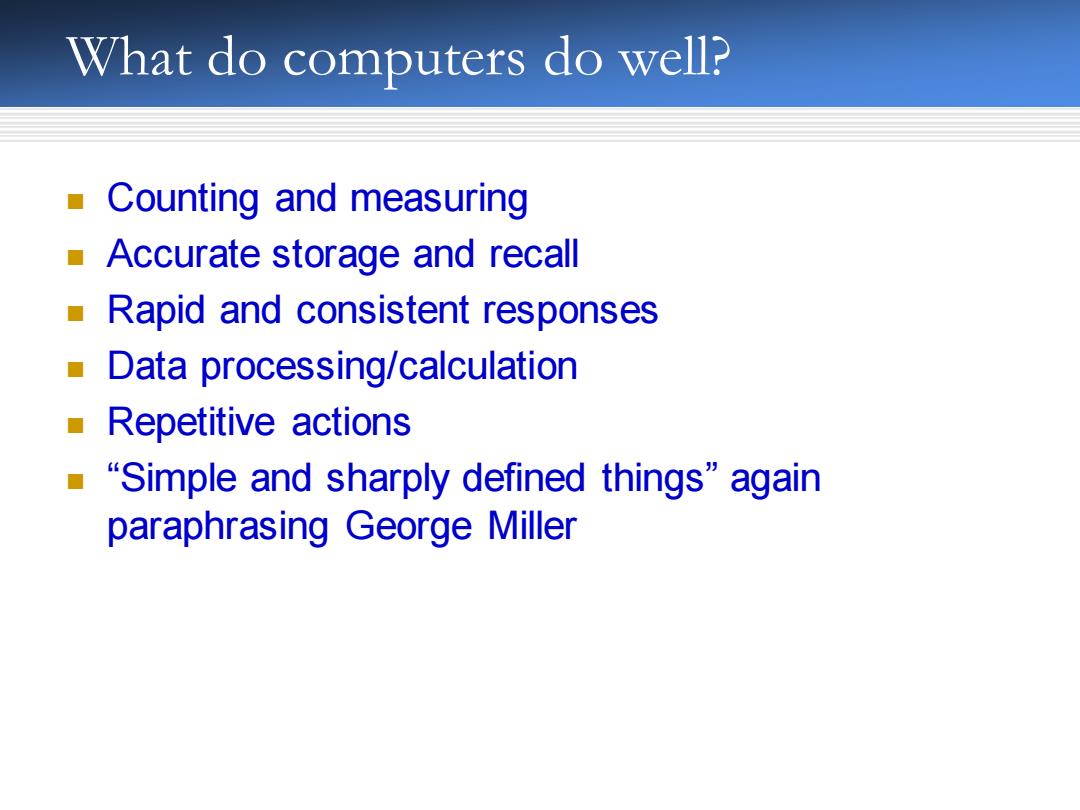
What do computers do well? Counting and measuring Accurate storage and recall Rapid and consistent responses Data processing/calculation Repetitive actions “Simple and sharply defined things”again paraphrasing George Miller
What do computers do well? ◼ Counting and measuring ◼ Accurate storage and recall ◼ Rapid and consistent responses ◼ Data processing/calculation ◼ Repetitive actions ◼ “Simple and sharply defined things” again paraphrasing George Miller
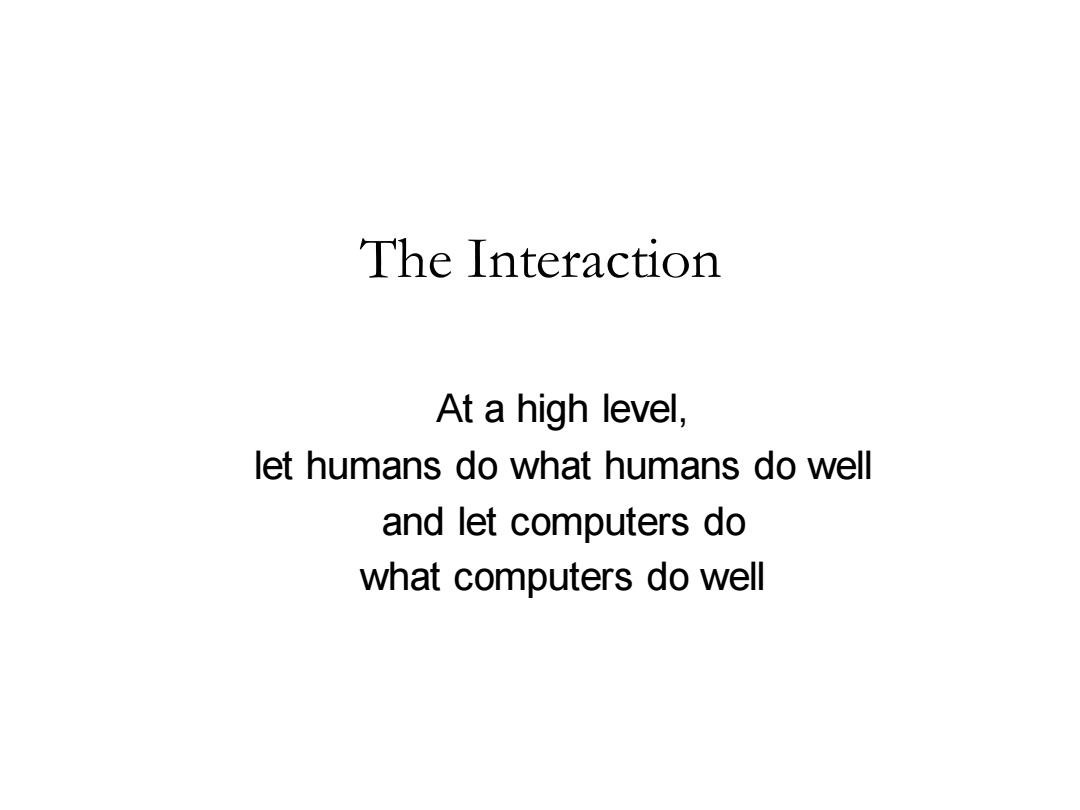
The Interaction At a high level, let humans do what humans do well and let computers do what computers do well
The Interaction At a high level, let humans do what humans do well and let computers do what computers do well